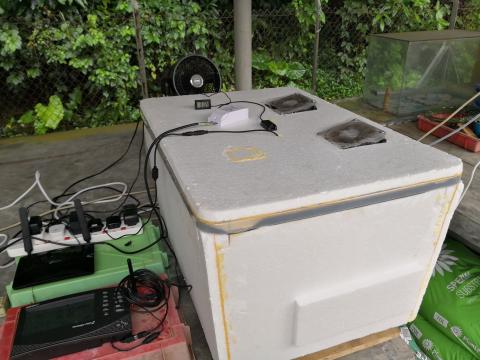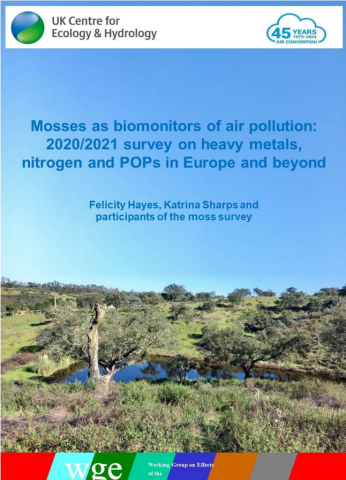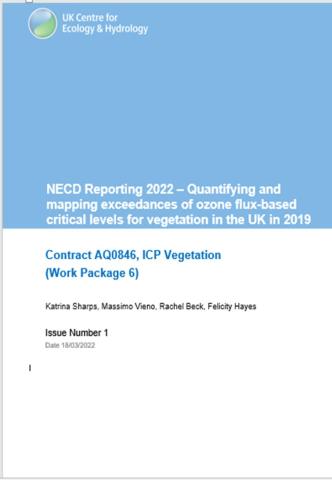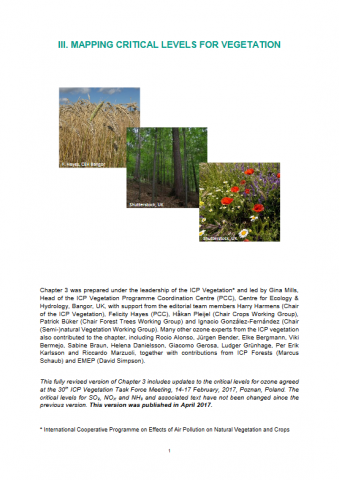
Blog article written by Felix Leung, Chinese University of Hong Kong.
Ozone garden project: ozone analyser
This summer (2018), we started a new project analysing the ozone impact of ground level ozone on vegetation in Hong Kong. Hong Kong is a metropolitan city with a population of around 8 million people in a land area of ~1000 km2. However, more than 75% of the land area is classified as countryside with forests and farmland. Hong Kong has a sub-tropical climate and because of its mountainous terrain, it has a high biodiversity with some species that are endemic to Hong Kong. With urbanisation in south China and increased industrial activities, air pollution is becoming a serious problem in Hong Kong. Ozone pollution threatens human health and also ecosystems. For plants, ozone induces early leaf death and can negatively impact growth in both natural vegetation and crops. We therefore propose to establish a free-air experimental garden to monitor, quantify and understand the mechanisms of ozone damage on plants. During this experiment, dubbed the “ozone garden”, we will grow cultivars of beans with different ozone sensitivities, which will act as bio-indicators of the local air pollution impacts on ecosystems. Such a free-air ozone garden has been built at multiple locations in the US and Europe, but will be the first of its kind in South China. The data obtained from this garden will be essential to not only demonstrate the impacts of air pollution on plants under locally specific environmental conditions, but can also be used to derive important parameters of ecophysiology and biometeorology that can be used to build a regionally relevant earth system model for predictive purposes.
To set up this ozone garden, we have found a small plot of land in the Chinese University of Hong Kong. This land was also used for growing soybeans and rice for research purposes. The next thing we did is to purchase an ozone analyzer. There are a lot of ozone monitors on the market but they are usually not sensitive enough. After some serious searching, we found a laboratory graded ozone analyzer Teledyne 400 ozone analyzer. It is cited in many high profile research papers, because it provides a very accurate measurement that is up to 0.01ppb precision. This amazing instrument also comes with a very expensive price tag, which we were fortunate to get funding for.
The T400 uses a UV analyzer to compare the sampled air and the scrubbed clean air to get the ozone concentration. To make sure it works in optimal conditions, we need to ensure that the humidity and temperature is controlled and limited to around 25-30 degree Celsius. In Hong Kong, summer temperatures can often be higher than 30 degrees C. As we don’t have funding to build an air conditioned room for it, we used a simple solution. We put the ozone anlyzer inside a plastic box with styrofoam insulation and installed fans and a Peltier cooler to cool it down. After some days of engineering and design, we successfully managed to keep the box temperature under 30 degrees even when it was 36 degrees outside. We placed it under a shed and started recording the ozone.
Teledyne 400 (pictures show the Peltier cooling unit, and a small door cut into the box to allow access to the touch screen and USB hub for downloading data.
The measurements show that the summer ozone level in Hong Kong is very high. On some days the maximum ozone level reached over 100ppb. During the night, measured data showed a background ozone level of 15-20ppb.
Ozone profile in late August and early September 2018. A monsoon rain affected Hong Kong on 27th August and ozone levels remained low after that.
Average ozone (ppb) on sunny days
I will continue to talk about quantifying ozone injury on beans in my next post.


